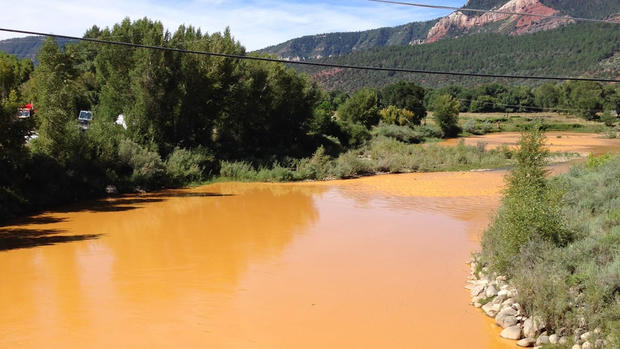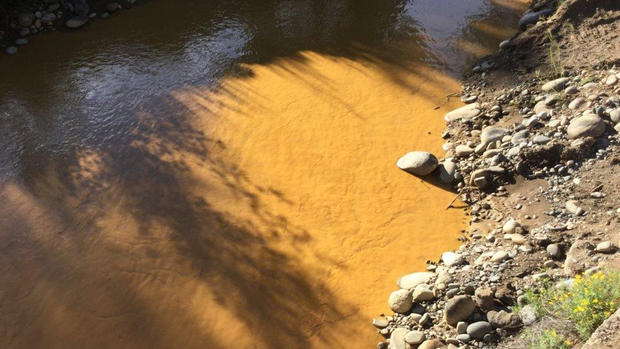EPA On Wastewater Into Animas: 'Long-Term Impact'
DURANGO, Colo. (CBS4)- Toxic wastewater from a mine continues to spill into the Animas River in La Plata County and has reached the confluence with the San Juan River in New Mexico.
About 1 million gallons of wastewater from Colorado's Gold King Mine began spilling into the Animas River on Wednesday when a cleanup crew supervised by the Environmental Protection Agency accidentally breached a debris dam that had formed inside the mine.
The mine has been inactive since 1923.
No health hazard has been detected, but tests were being analyzed. Federal officials say the spill contains heavy metals including lead and arsenic.
"This is going to be a long-term impact. The sediment, the metals in that sediment, are going to settle to the stream bottom and as we have storm surges, as we have flooding events, that sediment can and will likely get kicked back up," said EPA Region 8 Administrator Shaun McGrath.
The exact environmental impacts aren't known and there will likely be long-term impacts with how much metal is in the water.
Colorado Parks and Wildlife is monitoring aquatic life in the contaminated river near Durango. Right now, 107 fish placed in cages in the water are still alive. Officials will continue to monitor them for the next few days.
The yellow sludge arrived in the city of Aztec on Friday night and Farmington, N.M. on Saturday morning, San Juan County Emergency Management Director Don Cooper said.
Officials in both cities shut down the river's access to water treatment plants and say the communities have a 90-day supply of water and other water sources to draw from.
The Animas flows into the San Juan River in New Mexico, and the San Juan flows into Utah, where it joins the Colorado River in Lake Powell.
The spilled water also contained cadmium, aluminum, copper and calcium, but the concentrations were not yet known.
While awaiting further results on the concentration levels of the metals in the water, the EPA released results Saturday showing how acidic the water became after the spill.
In Cement Creek, near the spill, the water registered a pH level of 3.74, which the EPA said is similar to the acidity of tomato juice and apples. Further downstream, in Silverton, pH levels were found to be about 4.8, which is similar to liquid black coffee.
The EPA warned people to stay out of the river and to keep domestic animals from drinking from it. Local officials declared stretches of the river off-limits in Colorado and New Mexico.






